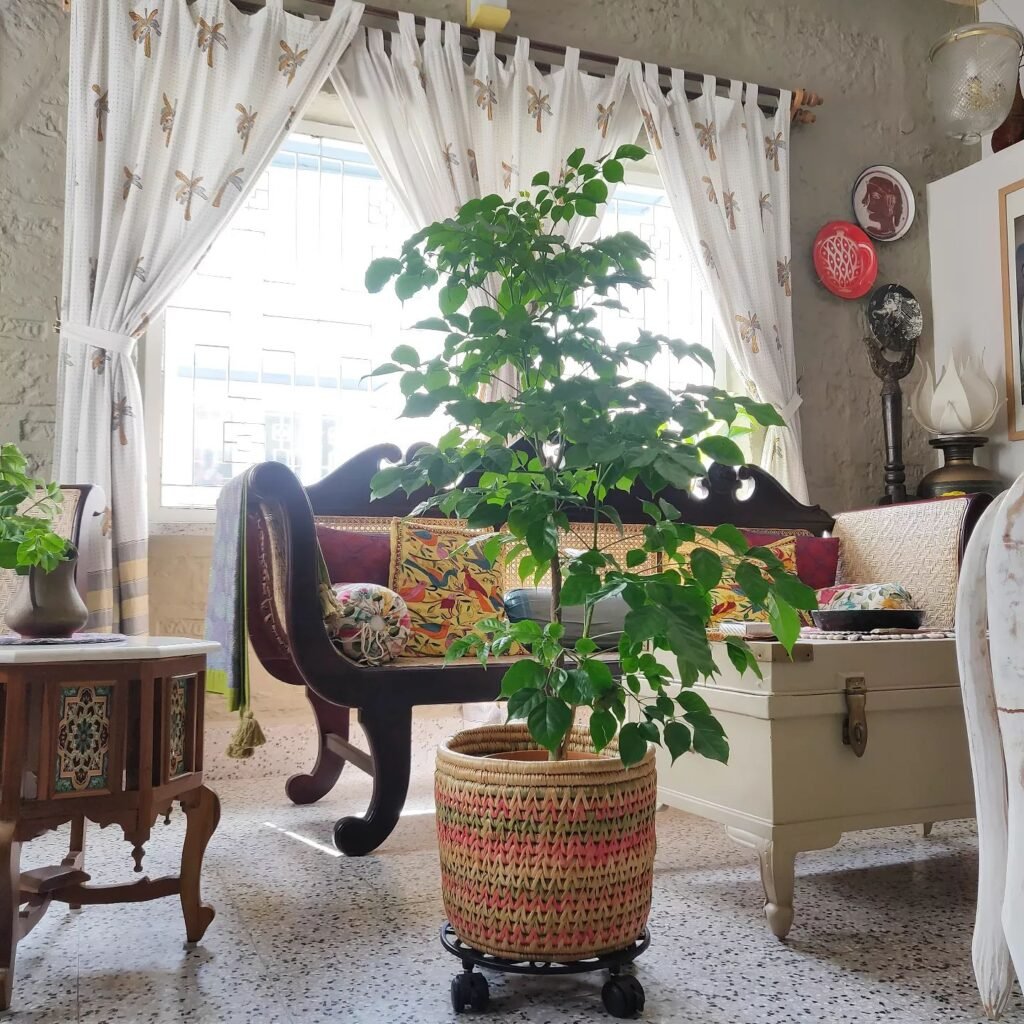Looking to bring a splash of elegance and a wave of green into your home? The Radermachera Sinica, or China Doll Plant as it’s affectionately known, is a brilliant choice. This delightful houseplant, with its shiny green leaves and neat growth habit, has quickly become a favourite among plant lovers in the UK. Its charm lies not just in its appearance but in its ability to transform any room into a more inviting and lively space. In this article, I’ll share some key tips to help your China Doll Plant thrive, ensuring it adds beauty and vitality to your indoor surroundings. Let’s dive into the world of plant care together, making our homes brighter and greener one leaf at a time.
Appearance of Radermachera Sinica (China Doll plant)
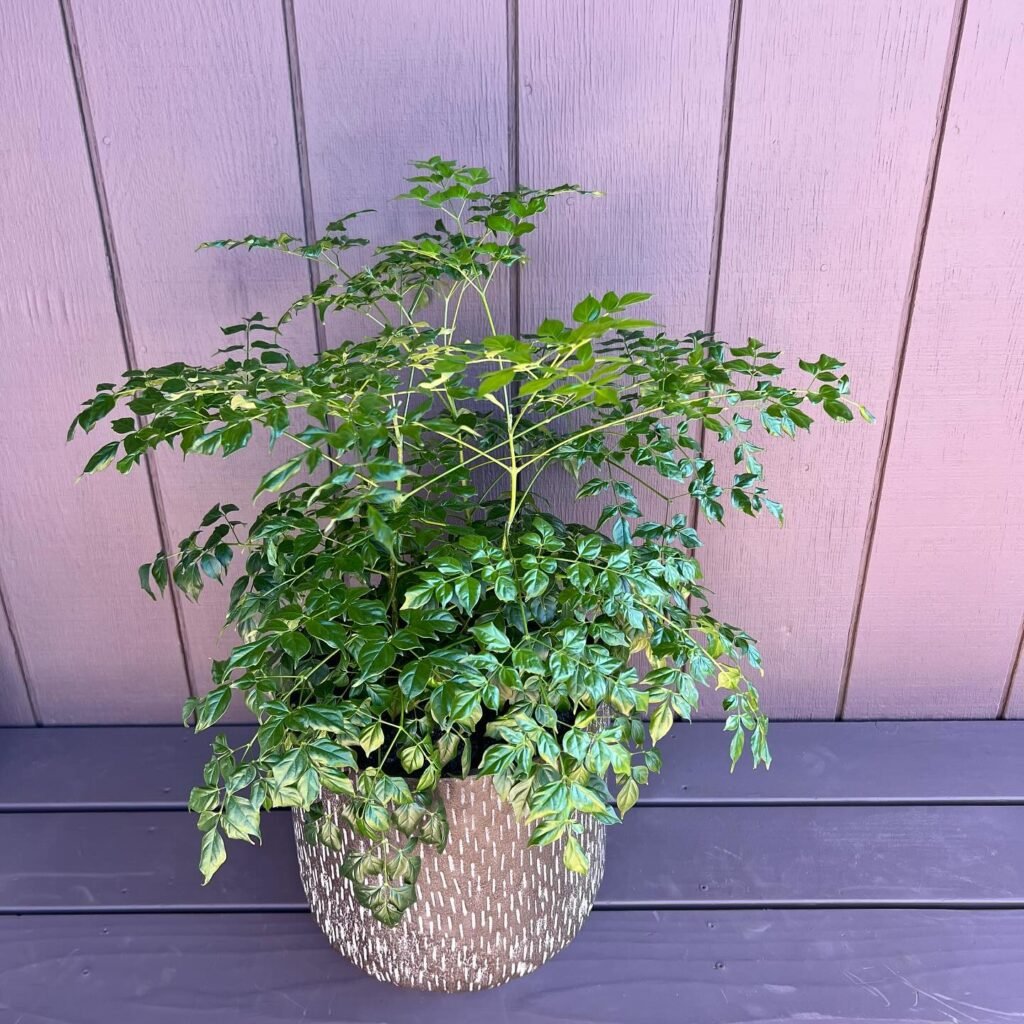

The Radermachera Sinica, or as I like to call it, the China Doll Plant, is an absolute gem for anyone looking to add a touch of nature’s elegance to their indoor space. This plant not only has the potential to bloom beautiful white, trumpet-shaped flowers but also carries a charm that can brighten up any room, despite its flowers being a rare sight indoors. It’s particularly celebrated in Australia for these stunning blooms, which add elegance and a natural beauty that’s simply unmatched.
Aside from its potential for delicate blooms, what really draws me to the China Doll Plant are its other names, such as the serpent tree and emerald tree, each reflecting its unique beauty and the allure it brings into a home. The plant showcases a lush display of glossy green leaves, growing from robust woody stems. Each leaf, intricately split into fine leaflets, paints a picture of sophistication, making the China Doll Plant a striking feature in any setting.
The growth habit of this plant is something else that captivates me. It can reach up to 1.5 metres in height and about 1 metre in width, transforming any bland corner into a vibrant oasis of greenery. Whether placed on a sunny windowsill, nestled in a cosy nook, or displayed as a stunning centrepiece, it never fails to catch the eye and infuse the room with vitality and charm.
For someone new to gardening, like myself, the China Doll Plant is a dream come true. Its easy-to-care-for nature means that even those with minimal gardening experience can enjoy its beauty without too much fuss. And let’s not forget one of its most appealing features: its pet-safe nature. This means I can have this beautiful plant in my home without worrying about it posing any risk to my furry friends. Its non-toxicity is a huge plus, making it an excellent addition to any pet-friendly household.
In summary, the Radermachera Sinica or China Doll Plant, with its lush foliage, elegant potential for flowering, and safe interaction with pets, offers a stunning and low-maintenance choice for indoor gardening enthusiasts. Its ability to add a lively touch to the home decor, coupled with its straightforward care requirements, makes it an ideal plant for beginners and seasoned gardeners alike. By getting to know this unique plant, you can better appreciate and care for it, ensuring it remains a healthy and vibrant part of your indoor garden.
 The Radermachera Sinica (China Doll Plant) was a late discovery in Western horticulture, only gaining popularity as a houseplant in the late 20th century. Native to Asia’s subtropical areas, it quickly became a favourite for its elegant look and easy care.
The Radermachera Sinica (China Doll Plant) was a late discovery in Western horticulture, only gaining popularity as a houseplant in the late 20th century. Native to Asia’s subtropical areas, it quickly became a favourite for its elegant look and easy care.
Light Requirements for Radermachera Sinica
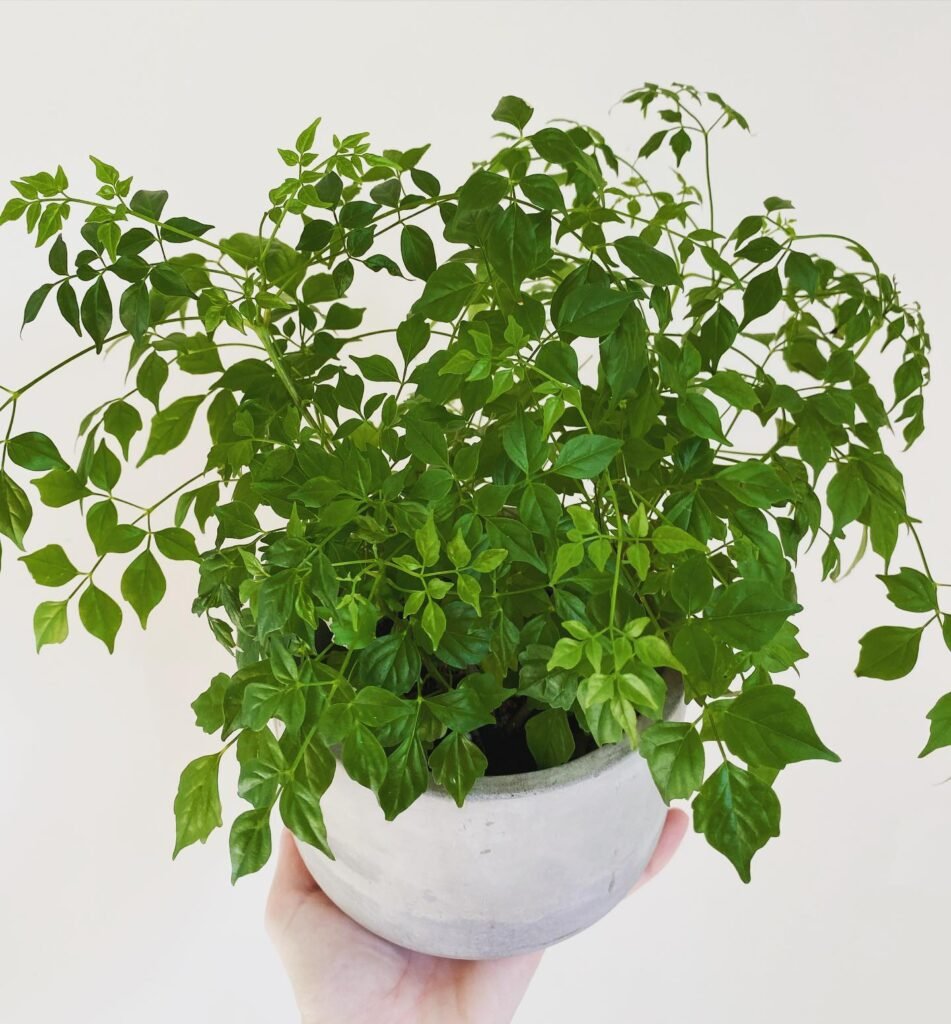

Radermachera sinica, commonly known as the China Doll plant, requires specific lighting conditions to thrive and grow healthy. As an indoor plant, it prefers a bright, indirect location with limited exposure to direct sunlight. Placing your Radermachera sinica in a spot that receives up to two hours of morning or evening sunlight is ideal.
Direct sunlight for extended periods can be detrimental to the plant’s foliage, leading to decline and even death. It’s crucial to find the right balance of light to ensure the well-being of your Radermachera sinica.
Proper lighting is essential for the health and growth of your Radermachera sinica. Placing it where it can receive bright, indirect light will promote lush foliage and overall plant happiness.
By avoiding all-day sunlight and providing up to two hours of morning or evening light, you can create the perfect light conditions for your China Doll plant to thrive. This will help maintain its glossy green leaves and ensure its beauty enhances your indoor space.

Watering Tips for Radermachera Sinica (China Doll plant)
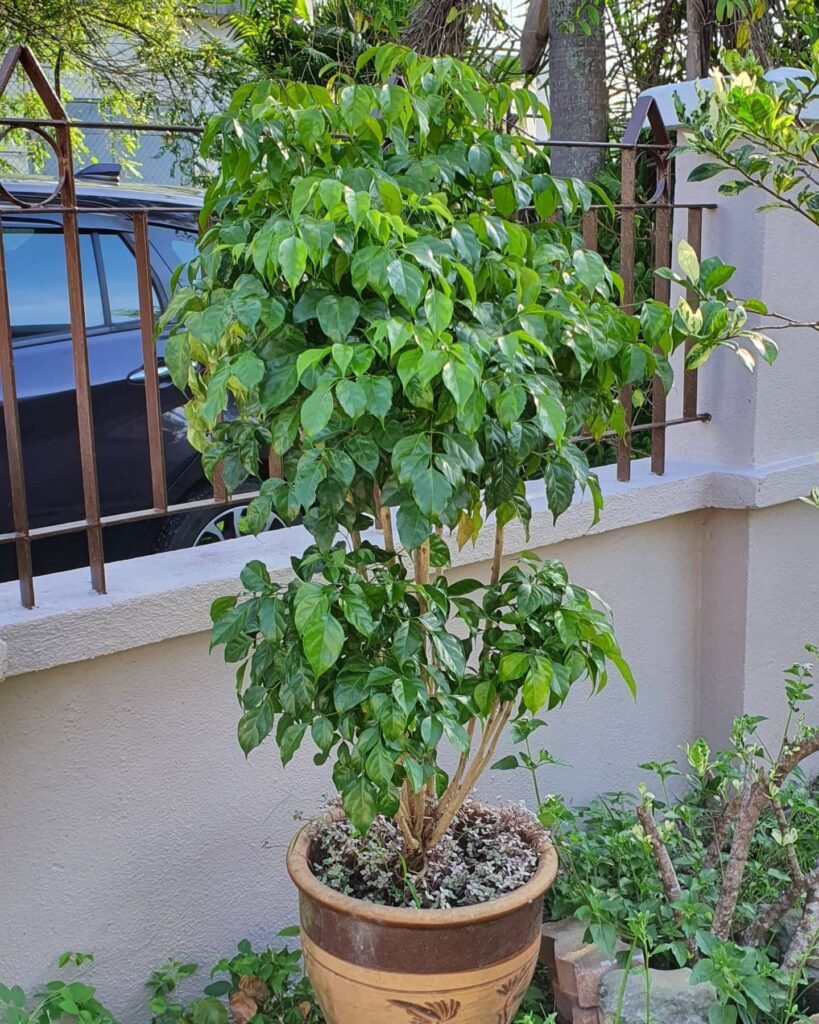
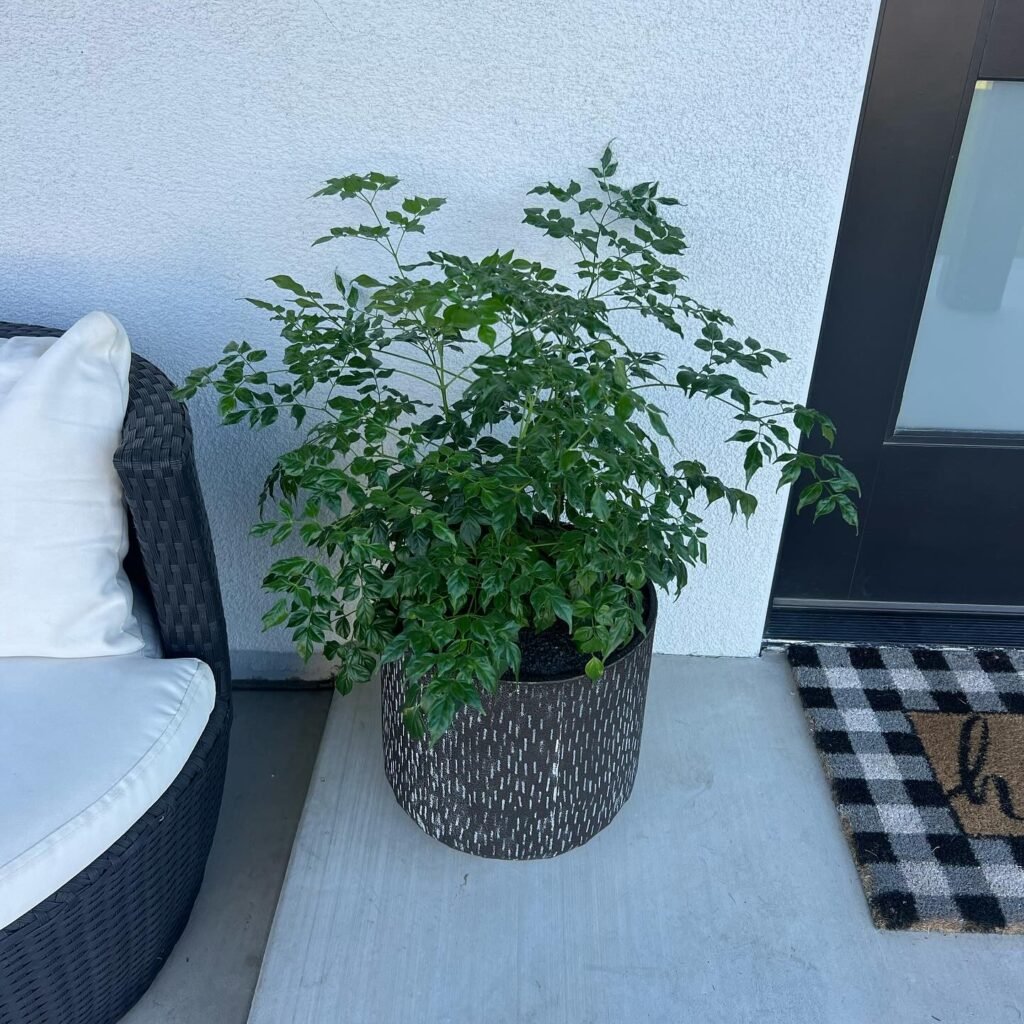
Proper watering is essential for maintaining the health and vitality of your Radermachera sinica, also known as the China Doll plant. This tropical beauty thrives when kept in relatively moist soil, as it is intolerant to long periods of drought. Here are some watering tips to help you care for your Radermachera sinica:
- Regular watering: It is important to water your Radermachera sinica regularly to prevent it from drying out. As a general rule, aim to keep the top third of the soil moist.
- Allow for drying: During the growing period, allow the top third of the soil to dry out between waterings. This helps prevent overwatering, which can lead to root rot and other issues.
- Adjust watering in autumn and winter: As the seasons change, reduce the frequency of watering. During autumn and winter, when the plant’s growth slows down, reduce watering further to avoid waterlogged soil.
- Balancing moisture: Finding the right balance of moisture is crucial for the health of your Radermachera sinica. Overwatering can cause root rot, while under-watering can result in stunted growth and yellowing foliage.
By following these watering tips, you can ensure that your Radermachera sinica remains happy and thriving in your home. Remember to always observe your plant’s moisture needs and adjust your watering schedule accordingly for optimal care.

Fertilizing and Soil for Radermachera Sinica
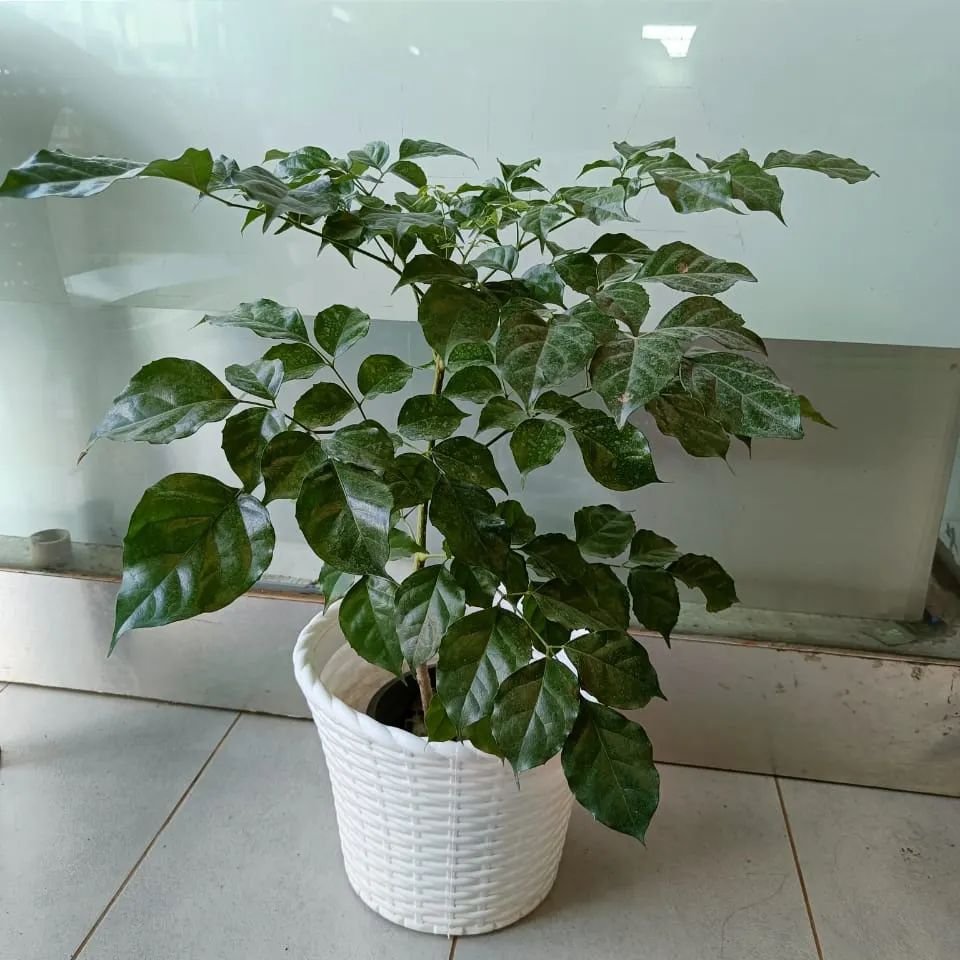

Radermachera sinica, more widely recognised as the China Doll plant, thrives when given the proper care, particularly concerning fertilisation and soil management. Here are some tailored recommendations to help you nurture your Radermachera sinica, ensuring it remains a healthy and flourishing addition to your indoor garden:
- Fertilisation:
- To support its growth and maintain its lush appearance, it’s crucial to fertilise your China Doll plant regularly. Utilise a fertiliser specifically labelled for houseplants.
- During the vibrant growing seasons of spring and summer, I suggest fertilising your plant once every four waterings. This frequent feeding caters to its increased nutritional needs as it grows.
- In the autumn and winter months, when growth naturally slows down, reduce the frequency of fertilisation to once every six waterings. This adjustment helps prevent overfertilisation, which could potentially harm the plant.
- Soil and Repotting:
- Choosing the right soil is vital for the health of your Radermachera sinica. Opt for a potting mix that is specifically formulated for houseplants. This type of mix ensures proper drainage and nutrient content.
- Every two years, it’s advisable to repot your China Doll plant. Select a pot that is slightly larger than the current one. This not only gives the roots more room to expand but also refreshes the soil, providing fresh nutrients that are essential for continued growth and vitality.
By adhering to these fertilising and soil care guidelines, you can significantly enhance the wellbeing of your Radermachera sinica. These simple yet effective practices are easy to follow, even for those new to gardening, and will help ensure that your China Doll plant remains a vibrant, healthy, and attractive feature in your home.

Pruning and Maintenance for Radermachera Sinica
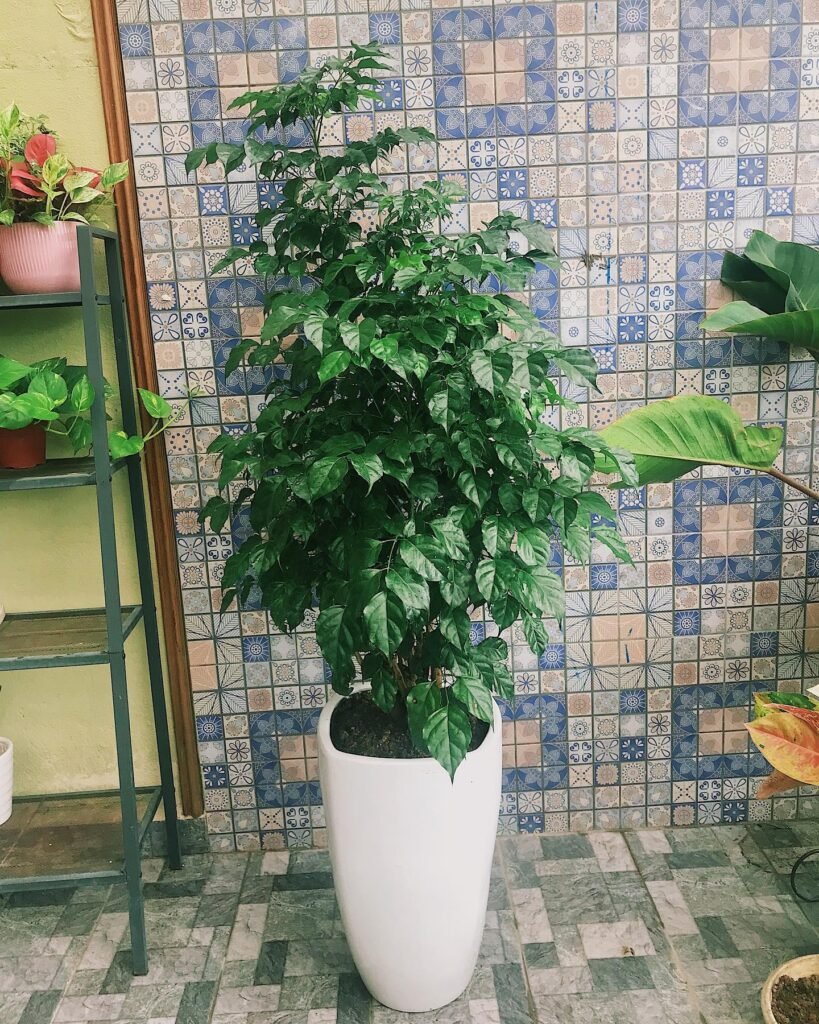
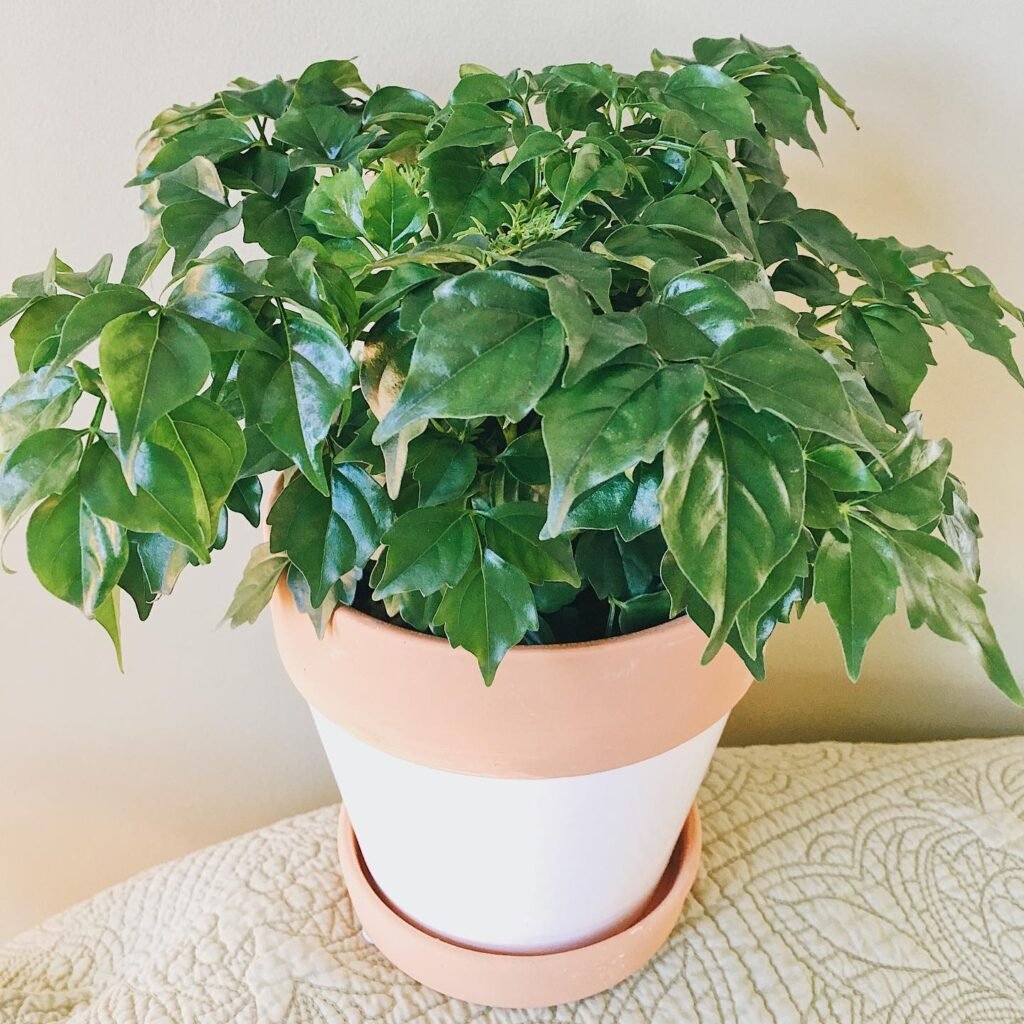
Regular pruning plays a crucial role in maintaining the compact growth habit of Radermachera sinica (China Doll plant). By removing any yellow or dying leaves, as well as clearing away plant debris, you can create optimal growing conditions for this beautiful houseplant.
When pruning your Radermachera sinica, it’s important to use clean scissors or shears to make clean incisions. This reduces the risk of bacterial and fungal diseases, helping to keep your plant healthy and thriving. Remember to dispose of any pruned parts properly to prevent the spread of pests or diseases.
Pruning can also stimulate flowering in the spring and summer, adding a burst of beauty to your indoor space. Don’t be afraid to selectively trim back branches or remove crowded growth to encourage a more abundant display of blooms.
Aside from pruning, proper maintenance is key to the long-term health of your Radermachera sinica. Keep an eye on the plant and remove any dust or dirt that may accumulate on the leaves. Regularly inspect the foliage for signs of pests, such as spider mites or mealybugs, and take appropriate measures to control and prevent infestations.
Additionally, ensure your Radermachera sinica is placed in a suitable spot with the right level of light and temperature. Adequate watering and fertilization, as mentioned in previous sections, are also essential to its overall well-being.

Propagating Radermachera Sinica (China Doll plant)
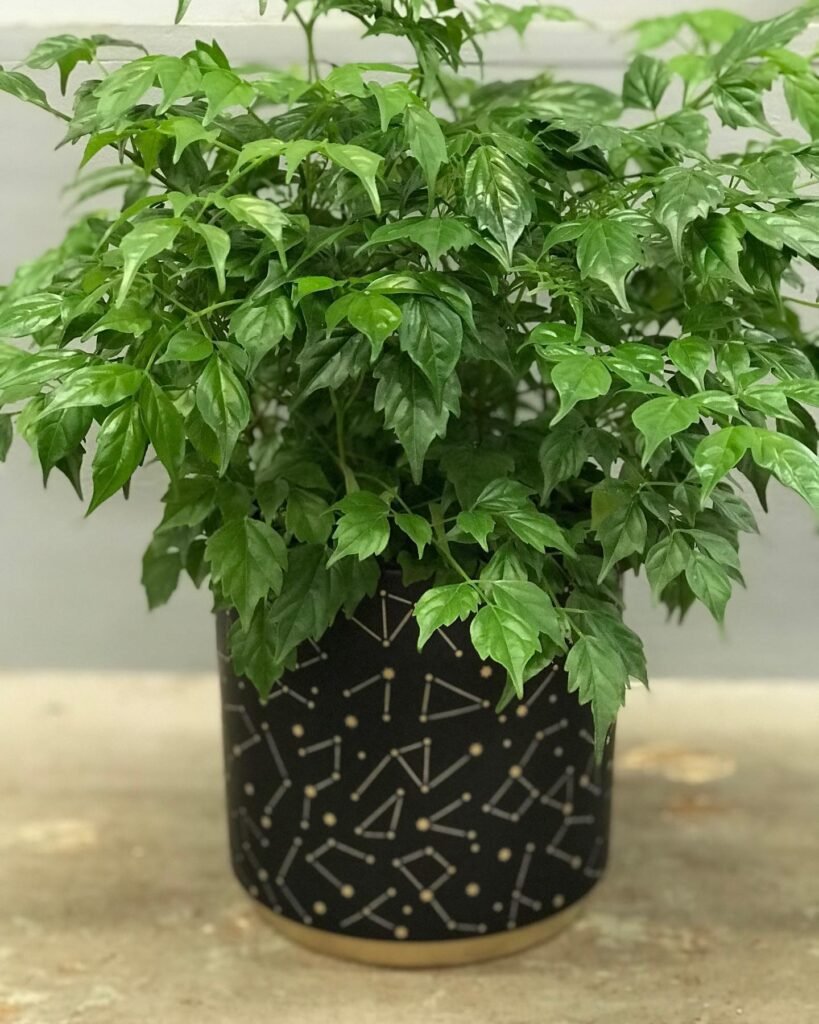
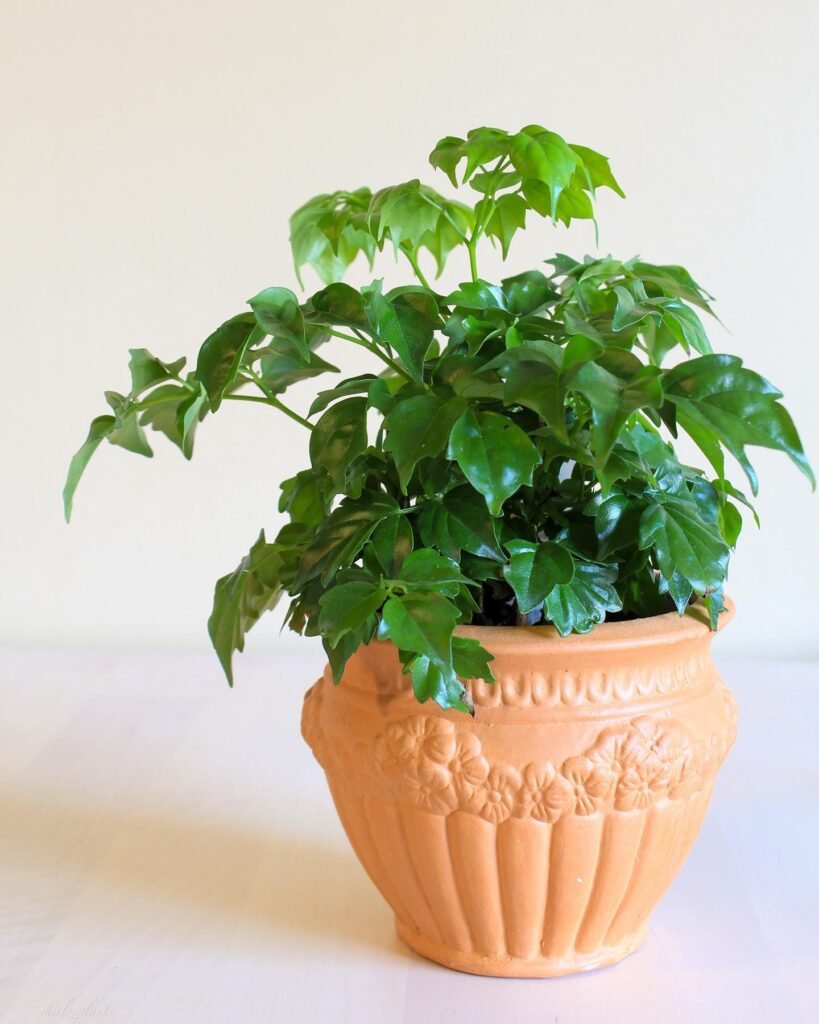
If you’re looking to expand your collection of Radermachera Sinica plants, propagation is a rewarding and cost-effective method. Through stem tip cuttings, you can easily create new plants that will grow and thrive just like their parent.
To start, select stems that are at least 8cm in height and part of an established Radermachera Sinica plant. Using clean scissors, make a clean cut approximately 8cm down from the end of the stem. This will ensure that you have a healthy cutting to work with.
Next, dip the cut end of the stem into water. This helps prevent air bubbles from forming in the cut, ensuring that water and nutrients can be properly absorbed. After moistening the end of the stem, dip it into a rooting hormone. Rooting hormone contains substances that stimulate root development and speed up the propagation process.
Tip: Use a rooting hormone specifically formulated for houseplants for the best results.
After applying the rooting hormone, prepare a pot with a houseplant-labelled potting mix. Make a small hole in the soil using your finger or a pencil and gently place the cutting into the hole. Press the soil around the stem to provide stability and ensure good soil-to-stem contact.
Once the cutting is securely planted, place the pot in a bright and warm area. Ideally, provide a temperature of around 25°C (77°F) to promote root growth. Keep the soil moist but not waterlogged, as excessive moisture can lead to root rot.
Rooting can take up to three months, depending on environmental factors such as temperature and humidity. During this time, be patient and monitor the progress of your cutting. You may notice new growth or the development of roots emerging from the base of the stem.
- When the cutting has developed a healthy root system, you can transplant it into a larger pot.
- Choose a pot with adequate drainage holes to prevent waterlogged soil.
- Use a houseplant-labelled potting mix to provide the necessary nutrients for the new plant.
- Handle the roots gently to avoid damage before placing the cutting in the new pot.
- Ensure that the soil is evenly moist and place the potted cutting in a bright location.
Remember to continue providing proper care for your newly propagated Radermachera Sinica plant, following the care tips outlined earlier in this article. With time, patience, and proper care, your propagated plant will grow into a beautiful China Doll plant, adding to the greenery and beauty of your indoor space.

Repotting Tips for Radermachera Sinica
Repotting is an essential part of caring for your Radermachera sinica, also known as the China Doll plant. By repotting every two years, particularly during the spring, you can ensure optimal growth and health for your plant.
To begin, choose a well-draining houseplant-labelled potting mix that will provide the necessary nutrients and support the growth of your Radermachera sinica. Opt for a pot that is slightly larger than the current one, allowing room for the roots to spread.
When repotting, it’s important to be gentle with the roots to avoid damaging them. Carefully remove the plant from its current pot, loosening the roots if necessary, and place it in the new pot, ensuring it is centered and at the same depth as before.
Fill in any remaining space around the roots with the potting mix, gently pressing it down to secure the plant. Be careful not to compact the soil too much, as it may hinder drainage and root growth.
After repotting, water your Radermachera sinica thoroughly to help the new soil settle and hydrate the roots. Place the plant in a suitable location that provides the right amount of light, avoiding direct sunlight.
Repotting your Radermachera sinica every two years allows you to refresh the soil, provide ample space for root growth, and support the overall well-being of your plant. By following these repotting tips, your China Doll plant will continue to thrive and beautify your indoor space.
 The Radermachera Sinica (China Doll Plant), despite its delicate look, is very robust. Native to Southeast Asia’s mountains, it not only thrives in various indoor environments but also purifies the air, removing toxins and enhancing your home’s atmosphere.
The Radermachera Sinica (China Doll Plant), despite its delicate look, is very robust. Native to Southeast Asia’s mountains, it not only thrives in various indoor environments but also purifies the air, removing toxins and enhancing your home’s atmosphere.
Common Issues with Radermachera Sinica
Radermachera sinica, known as the China Doll plant, is celebrated for its resilience as a houseplant. Despite this hardiness, it’s not impervious to certain common challenges that might compromise its health and aesthetic appeal. Gaining an understanding of these potential issues, along with effective troubleshooting methods, is key to ensuring the vitality of your Radermachera sinica.
1. Irregular Watering:
- A prevalent difficulty encountered with Radermachera sinica involves inconsistent watering schedules, which may lead to symptoms such as leaves turning yellow or dropping off.
- It’s crucial to regularly check the soil’s moisture content, striving for a balance that prevents both over and underwatering. Letting the top inch of soil dry out before the next watering can serve as a good rule of thumb.
- Tailor your watering frequency to meet the specific needs of your plant, taking into account factors such as the current season and the environment’s humidity level. Overwatering can result in root rot, a serious condition, while insufficient watering may inhibit growth and cause the leaves to yellow.
2. Pest Infestation:
- Unfortunately, the China Doll plant can become a target for pests, including spider mites, mealybugs, and scale insects. These unwelcome guests may manifest through signs like webbing, a sticky residue, or the visible presence of the pests themselves on foliage.
- Upon detecting any such infestation, it’s imperative to act swiftly by employing treatments such as insecticidal soap or neem oil, which are effective in eradicating these pests.
- A proactive approach involving regular inspection and maintaining cleanliness around your plant can significantly deter pest invasions, ensuring your Radermachera sinica remains healthy and vibrant.
3. Environmental Stress:
- Radermachera sinica is notably sensitive to fluctuations in its immediate environment, particularly concerning light and temperature. Such changes can result in the dropping of leaves.
- To foster a conducive growth environment, ensure your plant enjoys stable and consistent lighting. Shield it from the extremes of temperature and draughts, which can be detrimental.
- Should there be a need to relocate your plant, doing so gradually will help it adjust without undue stress. Providing a steady and suitable environment is essential to mitigating stress-related issues.
By attentively managing these common concerns and cultivating an environment tailored to the needs of your Radermachera sinica, you can significantly enhance its health and longevity. Remember, the key to a thriving China Doll plant lies in the balance of consistent care and vigilance against potential problems.
Helpful Videos about Radermachera Sinica (China Doll plant)
In this uniquely curated collection, I’ve gathered a selection of videos to offer you clear and simple instructions on caring for your Radermachera Sinica, also known as the China Doll Plant. These videos are crafted to guide you through the fundamental aspects of nurturing your plant, ensuring it flourishes and remains vibrant. Aimed specifically at beginners, the content is straightforward, making it effortless for anyone new to gardening to grasp the essentials of keeping their China Doll Plant in prime condition. You’ll find these visual guides available online, providing a convenient way to learn at your own pace.
- China Doll (Radermachera sinica) Care: What to Know
Frequently Asked Questions about Radermachera Sinica (China Doll plant)

Ever wondered how to look after your Radermachera Sinica? Dive into my comprehensive FAQ for essential tips on caring for your China Doll Plant. Discover everything from the perfect lighting conditions to watering techniques and overall maintenance, ensuring your plant stays lush and vibrant.
Radermachera Sinica, commonly known as the China Doll Plant, is a lush, leafy houseplant known for its dense, glossy green foliage and compact growth habit.
Water when the top inch of the soil feels dry. Typically, this might be once a week, but adjust according to the humidity and temperature of your home.
Yes, it thrives in bright, indirect sunlight. Avoid direct sun, which can scorch its leaves.
In the UK, it’s best grown indoors due to its preference for warm, stable conditions.
Yellow leaves can result from overwatering, underwatering, or lack of nutrients. Check the soil moisture and adjust your care accordingly.
Choose a pot slightly larger than the current one. Gently transfer the plant, adding houseplant-specific soil to fill the gaps. Water it well after repotting.
Yes, it’s non-toxic and safe for pets.
Regular pruning can encourage a bushier growth. Trim back the tallest stems, cutting just above a leaf node.
Legginess usually indicates insufficient light. Move your plant to a brighter spot, but away from direct sunlight.
Use insecticidal soap or neem oil to treat pests like spider mites or mealybugs. Regularly inspect and clean the leaves to prevent infestations.
A well-draining, peat-based potting mix is ideal. Ensure the pot has good drainage to prevent waterlogging.
Yes, but if your tap water is hard, consider using filtered or rainwater to avoid mineral build-up.
During the growing season (spring and summer), fertilise every four to six weeks with a balanced houseplant fertiliser.
Leaf drop can be caused by a sudden change in temperature or light, overwatering, or underwatering. Assess your plant’s environment and adjust care as needed.
Indoors, it can reach up to 1.5 metres in height and 1 metre in width with proper care.
Yes, it can be propagated by stem cuttings. Place a healthy stem cutting in water or soil until roots develop.
Light pruning can be done any time to shape the plant or encourage fuller growth. More extensive pruning is best in the spring.
Flowering is rare indoors. Optimal care can encourage flowering, but it’s not guaranteed.
Place a humidifier nearby, group it with other plants, or place the pot on a tray filled with pebbles and water.
Signs of overwatering include soggy soil, yellowing leaves, and a general limp appearance. If the pot feels unusually heavy or if water sits in the saucer, you might be overwatering.
Yes, if your bathroom receives enough indirect light and is well-ventilated. The high humidity can be beneficial for the plant.
Wipe the leaves gently with a damp cloth to remove dust. Avoid using leaf shine products, as they can clog the pores of the leaves.
I hope this acts as your stepping stone to mastering the care of your Radermachera Sinica. If you have any more questions, feel free to leave them in the comments – I’m here to help. Remember, every gardener starts from the ground up, and there’s a whole fascinating world of knowledge to discover about your China Doll Plant.

